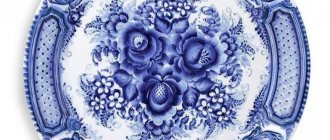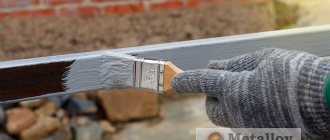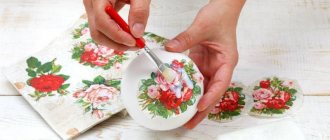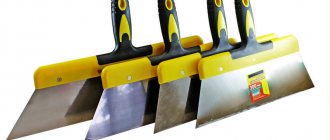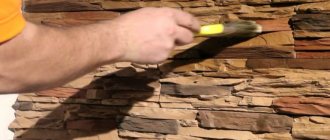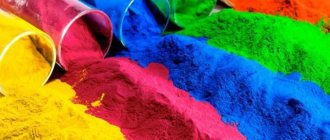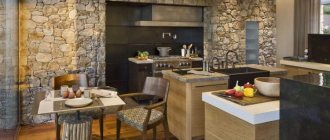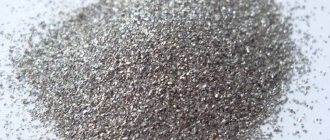Concrete is a fairly strong, wear-resistant and durable material that is not afraid of temperature changes and aggressive chemicals. Nowadays, different types of structures are made from concrete, including foundations, buildings, floors, walls and interfloor ceilings.
Although the material itself is very durable, its surface needs reliable protection, which a varnish composition for concrete can provide, significantly increasing its service life. So, let's talk about varnish for stone and concrete. Each type of concrete varnish has certain characteristics.
They produce paint and varnish materials that have increased resistance to wear, resistance to high temperatures and excellent resistance to moisture or fire resistance.
Peculiarities
Each type of varnish for coating concrete has certain characteristics. They produce paints and varnishes that have increased wear resistance, resistance to high temperatures, and a high level of moisture resistance or fire resistance. But each varnish for concrete and stone has the following features and characteristics:
- very simple, easy and quick to apply. You can cover fairly large areas with varnish without spending a lot of time on this work;
- is universal. Each polymer varnish for concrete can be applied not only to a concrete base, but also to stone and brick;
- have a high wear resistance. Each type of varnish provides the treated surface with strength and resistance to mechanical stress and damage;
- attractive, decorative appearance. All protective varnishes look very beautiful on the surface.
Despite the fact that concrete and stone are strong materials, when exposed to conditions of increased mechanical stress or outdoors, under the influence of negative natural conditions, precipitation and temperature changes, the surfaces of these materials can begin to delaminate, crumble and turn into dust. Varnishes used for stone, concrete and brick can significantly strengthen the base. Protective varnishes are applied after the concrete has completely dried; the varnish composition strengthens the concrete surface, increases the technical characteristics and service life of this material.
Features of using varnish for stone
A substance such as stone varnish is not just an additional coating. Using the product it is possible to achieve interesting design effects. The varnish coating adds a certain charm that makes the room feel cozy and attractive. It can also be used to emphasize the texture of the material, making the shade more saturated. Both glossy and matte varnishes are used. Which coating to choose depends entirely on personal preference.
Coating decorative stone with varnish
Also, the advantages of varnish for stone include:
- Protection from destruction. No matter how high-quality the stone is, it subsequently tends to disintegrate, deteriorate or become deformed. This can occur under the influence of moisture, from which the varnish coating perfectly protects. Also a negative factor is high temperature, which regularly affects the surface of the material. This is especially true for decorative fireplaces made using the masonry method. If you coat the structure with varnish, you will not only emphasize the texture of the material, but also protect it from uncontrolled destruction. Thus, finishing can be done without additional correction for a long time.
- Protection against plaque and bacteria. Over time, whitish salt stains will form on the surface of the stone, which can be avoided by using an external coating. Special varnish compositions protect against the occurrence of fungus, mold or rot.
- Maintaining an aesthetic appearance. Using paint and varnish, you can make the surface smooth and beautiful. This also prevents dust from accumulating.
Varnished brick
You can find a suitable varnish for stone in specialized online stores (for example, Amigo Stone). It is important that servicing is carried out by qualified salespeople who, if necessary, can help in selecting the right products. Sometimes, even experienced craftsmen find it difficult to navigate based on a wide range. However, the Amigo Stone online store will not allow anyone to get confused, providing competent advice.
I recommend: Question: We painted a decorative stone with paint - everything is stained, how to fix it?
Areas of application
Manufacturers produce concrete varnish for interior use and for application outdoors. Varnish solutions are usually used to coat the following objects:
- concrete floors, walls and ceilings;
- various fences and fences made of concrete;
- all kinds of concrete elements, street screeds, sidewalks, parking lots, industrial buildings;
- garden paths, blind areas made of concrete and stone, which are year-round under the negative influence of precipitation and temperature fluctuations.
Varnish is used on concrete to strengthen the material, make it resistant to abrasion, and also to make the stone more attractive.
Which varnish to choose
The choice of varnish depends on the type of mineral materials and their characteristics:
- For example, tiles, stone or brick for façade finishing should be coated with weatherproofing agents. The varnish must be moisture-resistant and resistant to ultraviolet radiation, temperature changes and mechanical stress. The mixture must be of high quality to maintain the strength of the material over a long period.
- Stone and ceramic surfaces indoors are less susceptible to atmospheric influences, but microclimate and mechanical activity also have an effect.
- Compositions with a wet stone effect are capable of creating a protective film coating that emphasizes the texture and richness of the shades.
- There are also mixtures that can give it a slight silkiness.
Therefore, the choice of varnish should be made based on your preferences. You just need to decide what effect you want to achieve and in what environment the material being processed will be located. To do this, you need to know the features and characteristics of each of the main types of varnish.
Varieties
In stores you can buy various varnishes for concrete for exterior use and for interior decoration. For each type of varnish, a different base is used, depending on this, the compositions are:
- polyurethane. They have maximum moisture resistance, so they are mainly used in places where air humidity is constantly high. Often, polyurethane varnish for concrete is used for street work, where it is applied to sidewalks, paths, and also to protect swimming pools and saunas;
- polymer. This variety is one of the most popular and can be used for processing concrete, stone, during interior and exterior work. The surface becomes very durable and wear-resistant, this type of varnish is easy to apply and dries quickly enough;
- acrylic. Almost every acrylic varnish for concrete is expensive, so it is most often used for decorative work, when covering small products and surfaces. Acrylic compounds perfectly strengthen the base and increase the moisture resistance of the material;
- silicone. They are also quite expensive and are used mainly for interior work and for varnishing small items. Silicone solution combines excellent decorative properties and high moisture resistance;
- epoxy. These varnishes are used less frequently and contain special epoxy resins. Basically, these mixtures are two-component; before application, both components must be mixed together. Epoxy mortars can be applied to stone, plaster, mineral slabs and brick; they have a fairly high coefficient of chemical and mechanical resistance.
In addition to the fact that varnish solutions are divided by composition, varnishes can also be divided by type of gloss; there are the following varieties:
- glossy;
- matte;
- semi-gloss;
- semi-matte.
Gloss and semi-gloss are applied to create an attractive finish; they create the effect of wet stone. And matte and semi-matte solutions for concrete are used in those rooms where there is increased traffic, and the varnish layer experiences daily increased mechanical loads. This applies to industrial premises, public places such as train stations, airports, etc. On the matte surface, scratches and other defects are not very visible.
Properties
In addition to protective characteristics, varnishes also have decorative properties. It depends on what substances are present in the composition. They are divided into two types:
- Glossy, semi-gloss effects, with the help of which the wet stone effect occurs.
- Matte and semi-matte effects that are suitable for high traffic floors.
Both the first and second types have almost the same properties. When working with a surface, for example, a fireplace or stove, it is necessary to take into account the temperature regime. You should also take into account when working on a surface that has high traffic.
Coating properties:
- Maximum resistance to moisture and aggressive environments;
- Due to the fact that the substance penetrates into the material being processed, wear resistance increases;
- Resistance to external factors, high and low temperatures;
- Maximum surface strength;
- Minimal flammability;
- Long service life.
On video: impregnating properties of stone varnish.
Polyurethane varnish compositions
Despite the fairly high price, these materials are the most popular. They easily and quickly penetrate the base of concrete, strengthen the material, fill all cracks, which significantly increases the strength of the screed. You can use a polyurethane mixture together with an impregnation of the same composition, thanks to which the effectiveness of the layer will greatly increase. In addition, impregnation improves adhesion, as well as resistance to moisture and mechanical loads, which increases the service life of concrete.
One of the popular and high-quality compositions is Tistrom polyurethane varnish for concrete. A solution of this brand is most often used in garages, warehouses, workshops, and others. The main advantage of Tistrom varnish is its high resistance to the influence of chemical oils, petroleum products, and other technological solutions. This varnish mixture is easy to use; in addition to its excellent protective properties, it is visually attractive and decorative. Tistrom is not afraid of wet cleaning, which does not lose its technical characteristics. This mixture is also often used to strengthen concrete floors on farms, livestock farms, and industrial organizations.
Popular hydrophobic solutions
There are compositions that differ in their scope of application. Some of them are intended only for surface use, others for volumetric use, and others can be applied to the surface and penetrate into the tile, filling the porous structure of the coating.
The domestic market offers many different formulations.
| Name of water repellent | Peculiarities | Life time | Consumption, l/m2 |
| Aquasil | Concentrated powder, characterized by high efficiency and low alkali content. Economical, can be used for surface and volumetric application. The water-repellent properties of the tiles increase up to 20 times. When applied volumetrically, it prevents the appearance of darkening. | 10 years | 0,25-0,5 |
| Tiprom U | Organic based concentrate. Has increased dirt-repellent characteristics. | 10 years | 0,15-0,4 |
| Crystallisol | The drug is based on methyl silicone polymer and is available in liquid form in 1 or 10 liter packaging. It is characterized by increased resistance to chemical and atmospheric influences, has increased vapor permeability and non-flammability | Up to 10 years | 0,1-0,3 |
| Ceresit ST 10,11,12,13 (for surface treatment); CO 81 (for volumetric processing) | Can be administered as an injection through artificial indentations. | 12 years | 0,2-0,5 |
| VOKA | It is a universal impregnation with increased moisture resistance, applied in 1 layer. | 11 years | 0,03-0,05 |
Table - types of hydrophobic solutions and their features
Consumption is indicated depending on the porosity of the surface. All drugs, except for the Ceresit and VOKA brands, are domestic.
Polymer varnish mixtures
They significantly enhance the quality of concrete; as a result, after using this varnish, the coating acquires very good performance properties. Polymer compounds repel moisture much better than polyurethane mixtures; they can effectively withstand aggressive environments and can be applied both indoors and outdoors. After the composition dries, the base becomes strong and durable; polymer solutions dry quickly enough, so they are often used to cover large areas.
The basis of these varnish mixtures is styrene, which makes the coating highly durable and resistant to various chemicals. One of the popular representatives of polymer solutions is Texol concrete varnish, which can be used as a decorative element when processing bricks, borders, paving stones, stone, and others. Texol is easy to apply, washes off very slowly after drying, and is highly resistant to the negative influence of the atmosphere.
How to create a “wet stone” effect
The decoration of the base and facade will be more attractive and interesting if the wild stone is coated with a product that provides the effect of a “wet” surface.
Olympus varnish has this property. It is made on an acrylic base and gives a transparent semi-matte shine. Varnish can be used for interior and exterior decoration: it increases the frost and moisture resistance of the finishing stone, fills the smallest pores of its structure, thereby preventing the accumulation of dirt in them. "Olymp" is non-toxic, has antibactericidal properties (prevents the development of mold and mildew), and does not have a strong odor. Before applying the covering composition, you need to prepare the surface of the finishing material. If there are inclusions of lime, cement, or plaster on the wild stone, it is recommended to use a remover from the same manufacturer to remove them: OLIMP. The product is called “Efflorescence Remover”. After cleaning the surface, you can begin applying varnish. You can work at a temperature not lower than +10°C. Drying time of the coating is no more than 1 hour. Stone processing can be done with a brush or roller.
Acrylic and silicone compounds
Although they are quite expensive, this is compensated by the small consumption of these mixtures when processing one square meter. Typically, silicone and acrylic based mixtures are matte. These solutions can be applied during ongoing production. The most rational use of these varnishes is to cover those areas that are subject to heavy loads and heavy wear.
A layer of this varnish applied to brick or stone will not turn yellow even after many years; the resulting film is highly protected from moisture. Silicone and acrylic mixtures usually have no odor and are safe for use indoors where people live. These varnish compositions can be applied to any building materials, including plaster and metal. By adding special pigments to them, you can give these solutions the necessary range and texture.
Types of varnishes for processing stone coatings
- Polymer varnish for stone. Among the most popular paint and varnish products for indoor and outdoor use. It has excellent strength, moisture resistance, wear resistance. It sets well, dries quickly, and has high adhesive properties.
- Polyurethane varnish for concrete. In terms of performance characteristics, we are little different from polymer coatings. The main advantage is immunity to water. It is better to varnish with this product where surfaces are constantly exposed to high humidity. Ideal for exterior facade work, stone processing in swimming pools, paving slabs.
- Silicone and acrylic compositions. They have a high decorative quality, which distinguishes them from polymer and polyurethane mixtures. Most often used for interior work. Among paint and varnish products, they are among the most expensive goods. Therefore, it is irrational to use acrylic or silicone varnish for mineral materials in exterior finishing and for varnishing large areas. However, the products have increased wear resistance and durability.
Polyurethane protects well from moisture, so it is more often used in outdoor work or rooms with high humidity.
Polymer varnish
This type of protective agent is used for coatings with mineral components. These include bricks, concrete, etc. The main features of the polymer composition are decorative properties and increased wear resistance. The substance resists cold and moisture well.
Over time, stones coated in this way do not fade and retain their load-bearing capacity. Most often, polymer compounds are used in construction for external cladding work. They can be used with natural materials and artificial products.
Surfaces coated with polymer varnish do not fade and retain their load-bearing capacity.
All polymer varnishes are made of one-component substances that can dry much faster than other solutions. This is due to the small proportion of water components. Due to this, the substance can even be used for gypsum products.
The structure of the substance allows you to achieve a matte effect when applied. This is especially noticeable when adding paint to solutions. In this way, you can achieve the appearance of any product with a design.
Polyurethane varnish
The substance can be used for all types of materials used in the construction of buildings. The solution is an oligomer with polyurethane components. The consistency is added to the organic solvent. Due to this, when hardening, the substance forms a transparent film. Adding paint can change the color, which is convenient for selecting the same type of texture.
Rules and recommendations for application
It is worth remembering that any varnish for stone and concrete is a synthetic mixture, so protective equipment such as gloves, a respirator and goggles will not be superfluous. If the varnish composition is applied indoors, the room must be thoroughly ventilated.
Before applying varnish to the surface of concrete, brick or stone, these building materials must first be prepared. Preparation includes cleaning from dirt, dust, grease, drying, and, if necessary, priming. When applying varnish solutions, the air temperature should not exceed 35 degrees.
Almost all types of varnish mixtures can be applied using a roller, brush and pneumatic spray from a spray gun. If the substance is to be sprayed, it must first be diluted to the required viscosity. Varnishing must be done in at least two layers, and if the surface of concrete or other building material is very porous, then a minimum of three to four layers must be applied.
To ensure that the varnish solution does not unexpectedly run out during the application process, when purchasing it you need to correctly calculate the consumption per square meter and buy the required volume of the mixture. Experts recommend coating concrete bases with polyurethane products because they have the highest protection against moisture. And if you need to treat artificial stone or interior walls, then it is better to apply silicone or acrylic varnish products to them. But polymer ones are significantly cheaper and have a wide range of applications; they can be applied to both internal and external surfaces. Before you start using this or that product, be sure to carefully read the instructions.
Types of varnishes
The main advantage of the varnish is that it is suitable for interior and exterior use. It can be used in any climate as it is resistant to temperature and moisture. Using varnish for stone and concrete, you can protect the material as much as possible from mechanical and physical stress, because the coating has a high level of wear resistance.
Polymer varnish
If we talk about construction work, polymer varnish is most often used here. A distinctive feature is increased water resistance. In addition, this coating dries very quickly. This saves a lot of time when working, especially when you need to cover a large area of concrete. This varnish for concrete floors is simply irreplaceable, because it perfectly resists not only moisture, but also cold.
It is often used for coating during external work due to its decorative properties. This allows you to maintain the load-bearing capacity, the surface will retain its appearance for a long time and will not fade.
Polyurethane varnish
Polyurethane varnish is suitable for absolutely any material used in construction. It is used as follows: polyurethane is added to an organic solvent. When the substance is applied and dries, it forms a colorless film. In order to change the color of the coating, just add paint of the required color.
It is most often used for stone in outdoor work, which allows you to achieve the effect of wet stone on the surface.
It is also used when working with concrete, brick, decorative and artificial products. This maximizes the durability of the material. Also, polyurethane varnish for concrete will increase waterproofing and anti-corrosion properties.
Silicone and acrylic varnishes
For decorative work, both silicone and acrylic varnish are suitable. Used for varnishing during interior work. This can be a stone, brick, or decorative surface. Thanks to the film that forms on the surface, complete protection from moisture is provided; in addition, the substance does not lose its original appearance and does not turn yellow.
You can easily achieve the desired texture and color; it can be a matte varnish of any shade, just add a special paint. Despite the fact that the substance has high protective characteristics, it is very rarely used in outdoor work. This is due to the high price category. Concrete varnish is most often used for floors and walls, as it provides maximum protection.
Epoxy varnish
Epoxy varnish is also used for decorative work, but this substance is intended for surfaces and wood products. It is absolutely harmless, which allows it to be used for covering furniture and for interior work.
Thanks to this coating, the material retains its natural texture, but at the same time provides maximum protection from moisture and mechanical strength. The substance has a high level of gloss when applied.
In addition to the advantages, some disadvantages should be noted. This substance does not have high elasticity. Also, working with it requires compliance with the technological preparation process.
Characteristics and features of stone varnishes
Polyurethane varnish coating can significantly increase the service life of a wooden surface and emphasizes the natural structure of the wood. Unlike other paints and varnishes, this solution has high protective properties. After processing the products, a durable layer is formed on the surface, which protects the wood from mechanical stress, water, atmospheric influences, microorganisms and decay.
Paint and varnish material is most often used to treat floors, be it parquet or concrete. The properties and purpose of the solution depend on the components that make up it. Polyurethane varnish significantly improves the performance characteristics of treated substrates. Surfaces become more moisture-resistant, highly durable, and also resistant to petroleum products, acids and abrasives.
The stone varnish has the following features:
- Can be used for external and internal processing.
- Varnishes strengthen brick, ceramic, concrete, stone and other coatings.
- Protection from atmospheric precipitation.
- Creating a moisture-resistant surface.
- Decorative properties - richness of shades, shine.
- Increased degree of adhesion.
- No reaction to chemical compounds, ultraviolet radiation and temperature changes.
- Resistance to intense mechanical stress.
- Durability.
Thanks to these characteristics, walls, floors or sidewalks treated with decorative varnish will last much longer and will look more attractive.
Branded paints and varnishes with prompt delivery in Ukraine
You can buy branded varnish for stone without leaving your computer by placing an order online in the OXIDOM online store, which is the official dealer of paints and varnishes of famous brands in Ukraine.
In the illustrated catalog you will find a water-based stone varnish containing acrylic and silicone resins, as well as a range of other compositions for natural and artificial stone, brick, paving slabs, facades, borders and concrete. Finding the required composition greatly simplifies the availability of a detailed description of the characteristics of each product item. By the way, the whole of Ukraine can personally verify the excellent quality of the paints and varnishes we sell, because the order is delivered to any locality in the country.
Manufacturers: review and reviews
Despite the high technical characteristics of polyurethane varnishes, there are also not very high-quality products on the construction market. To get a long-lasting, beautiful coating, you should not save on purchasing paint and varnish material. Before buying a varnish, it would be a good idea to familiarize yourself with popular manufacturers and reviews of their products.
We suggest you read: How to paint a brick wall on a balcony, process features
The American company Petri is a world-famous manufacturer and supplier of building materials. In the USA, the company occupies a leading position in the production of high-strength polyurethane-based varnishes. In the production of each individual type of building materials, the company uses special components and technologies, which allows it to produce products with unique technical characteristics.
Petri produces many different modifications of polyurethane varnishes. Each type has its own distinctive features and properties. General characteristics include high quality and extraordinary hardness, resistance of the formed coating to mechanical and chemical influences.
Petri polyurethane varnishes have many positive customer reviews. Among the shortcomings of the material, the only thing revealed is that the varnish is more expensive.
Among the positive qualities, consumers highlight the following:
- Health safety. The solution is environmentally friendly.
- No smell.
- High drying speed.
- Allows you to create an aesthetically attractive coating and perfectly emphasizes the natural structure of wood.
- The coating is durable and does not lose its original appearance and performance characteristics over time.
"KrasCo"
The Russian company has established itself as a manufacturer of high-quality paints and varnishes and self-leveling floors. The company is actively conducting research and developing new solutions in the field of protecting various surfaces from the negative influence of external factors and mechanical damage.
Polyurethane varnishes are produced under the Tistrom brand. On the construction market you can find both universal Tistrom varnishes and mixtures for specific purposes for covering certain types of surfaces. Polyurethane varnishes produced by KrasKo are made on a water basis and are an environmentally friendly material.
The mixtures can be used both indoors and outdoors, as they have high resistance to the negative influence of environmental factors.
Buyers highlight the following positive properties of Tistrom paint coating:
- adheres well to concrete floors;
- high strength of the created coating;
- good value for money;
- It applies easily and dries quickly.
Among the disadvantages, some buyers highlighted the high consumption of paint and varnish mixture on porous surfaces.
"VGT Enterprise"
VGT Enterprise has been manufacturing and selling high-quality paints and varnishes since 1992. The enterprise operates a research center for the development and implementation of new technologies for the production of goods. All products are manufactured in accordance with specifications and have appropriate quality certificates.
Polyurethane varnish is produced in the “VGT Premium” line, which also includes high-quality putty mixtures and enamels. In the production of products of this brand, only high-quality imported components are used.
Polyurethane-based varnish “VGT Premium” has excellent decorative properties and high performance characteristics. This material is intended for processing various wooden surfaces.
Buyers note the following positive properties of VGT Premium varnish:
- It is produced on a water basis without the addition of organic solvents and is completely environmentally friendly;
- has no smell;
- dries quickly;
- can be tinted with VGT pastes;
- abrasion resistance.
Among the disadvantages of the material, buyers highlight the high cost.
Main varieties
The modern construction industry produces a wide range of varnishes for concrete and concrete products. The most common are mixtures made on a polymer, polyurethane, acrylic and silicone basis. A few words about each variety:
- Polymer. They are considered the most popular due to the excellent strength of the coating, good water resistance and wear resistance. The advantages also include fairly rapid drying, which makes the substance very convenient, especially when treating large concrete floors.
- Polyurethane. Such varnishes for concrete have almost the same characteristics as polymer ones. However, they are best used in cases where the stone or concrete product is constantly exposed to moisture. The thing is that the polyurethane mixture has much greater moisture resistance compared to polymer. That is why polyurethane mixtures are recommended to be used, for example, for coating facing bricks, facade plasters, and finishing stones.
- Silicone and acrylic. The main advantage that distinguishes silicone and acrylic varnishes from polymer and polyurethane varnishes is their higher decorative quality. Such varnishes are best used for coating elements located indoors: they have good wear resistance and durability. Of course, they can also be used to treat elements located outside the house. True, in most cases this is not an entirely rational solution, since silicone and acrylic varnishes are quite expensive, and therefore it is much more profitable to opt for a polymer or polyurethane coating.
For clarity, I recommend watching the video. I note that this is a promotional video. However, it quite well reflects the scope of application of the varnishes we are considering.
It should be noted that in addition to composition, the substances we are considering are distinguished by the effect they create. In particular, varnishes for stone and concrete can be semi-gloss, glossy, matte and semi-matte. Semi-gloss and glossy ones are used to obtain the effect of a wet coating on certain decorative elements, and matte-semi-matte ones are used to cover concrete floors (especially in rooms with high traffic volumes).
We suggest you read: How to install a light switch in a concrete wall with your own hands
Polyurethane varnish has a number of significant advantages over other paints and varnishes.
Let us highlight the main advantages of this composition:
- Suitable for processing almost any material and type of wood, be it larch, pine, beech or maple.
- Easy to apply and requires special care. The varnish coating is resistant to water and household chemicals, so it is not afraid of wet cleaning.
- Good elasticity, due to which cracks do not form on the coating after drying.
- Abrasion resistance.
- Good resistance to temperature changes.
- Long service life of the created coating.
- High strength.
- Resistant to direct sunlight and precipitation.
However, polyurethane-based varnishes also have their disadvantages.
Let us highlight the main disadvantages of this material:
- Some polyurethane mixtures contain organic solvents. Such solutions have an unpleasant odor and are not environmentally friendly.
- Mixtures of poor quality may, after some time, lose their original appearance and turn yellow.
- High-quality compounds usually have a fairly high cost.
- If polyurethane varnish is applied incorrectly, noticeable defects may remain on the coating.
Thanks to its practicality and affordable price, gypsum tiles have established themselves as an excellent finishing material. Alabaster and selenite are used to make it. It can be manufactured either in production using special equipment, or by manual casting. The tiles are resistant to chemical cleaning compounds, fire resistant, and non-toxic.
Varnishing is a necessary measure, since products made from alabaster have low moisture resistance and can be destroyed if exposed to water for a long time. Another serious drawback of gypsum tiles is their lack of impact resistance. When using artificial stone during repairs, try to avoid chips and cracks, carefully remove the tiles from the boxes and install them on the wall surface in the same way.
The use of paint and varnish compositions will eliminate the above-mentioned disadvantages and use gypsum material as a finish even in rooms with high humidity.
Gypsum varnish - types and advantages
Many people prefer to paint plaster, because most often it is sold in its original (gray-white) form. Painting will reduce the hydrophobicity of the material that is glued to special compounds. The artistic design of the stone may also include the application of a special protective varnish layer.
Varnishing is usually done 5-10 days after finishing laying the tiles, in order to first allow the glue to dry completely. Varnish for decorative gypsum stone can have different compositions and properties. Many paints and varnishes are affordable, safe, allow the substrate to breathe, and do not clog it. Varnishing helps reduce the rate of destruction and make the coating durable and attractive in appearance.
Shellac material
This type of varnish is most often used in finishing and decoupage works. It has an alcohol base and is recognized as an excellent coating material for plaster. Shellac can be applied to all types of paints, and it looks especially good on metallics. The product provides a fine polish and is also used to treat furniture.
Shellac itself can give the gypsum stone a certain color, since it can be both transparent and colored. Some tint varnishes provide the effect of artificially aging the tiles. Often craftsmen prefer to impregnate plaster with a 1:1 mixture of shellac and rosin, after which the appearance of stains on the surface is completely eliminated. Externally, the tile becomes like marble.
Acrylic lacquer
This type of varnish includes a main polymer - acrylic, as well as resins, modifiers, and is water-based. It is not too thick, more like cream, and is used for external and internal work. Acrylic varnish is commonly used as a topcoat because it creates a durable film with a water-repellent effect. The polymers in the varnish will protect the tiles from fading and ultraviolet rays.
There are matte, glossy, semi-matte acrylic varnishes in stores. Gloss gives the plaster a gloss, but strongly reflects light, which must be taken into account when painting. Matte varnishes, on the contrary, give solidity, look expensive and impressive. All acrylic compounds are harmless to the body, dry quickly and are easy to apply. After drying, the paintwork will become transparent and completely retain the external attractiveness of the stone.
Oil varnish
Oil varnish is also suitable for application to gypsum bases. The material contains artificial resins, herbal additives, and has an oily texture. After application, it forms a film that will protect the base from destruction and damaging factors. Oil varnishes can also be matte or glossy. Special solvents are used to dilute them. There are tint materials in stores that give the tiles a beautiful color. After drying, the oil varnish darkens; the designer should take this into account.
Yacht varnish
This varnish is also made on an oil basis, but it has higher strength characteristics. It is applied in a very thin layer, because getting rid of drips is problematic. Drying of this product takes at least a day; at low room temperatures, this time is even longer.

